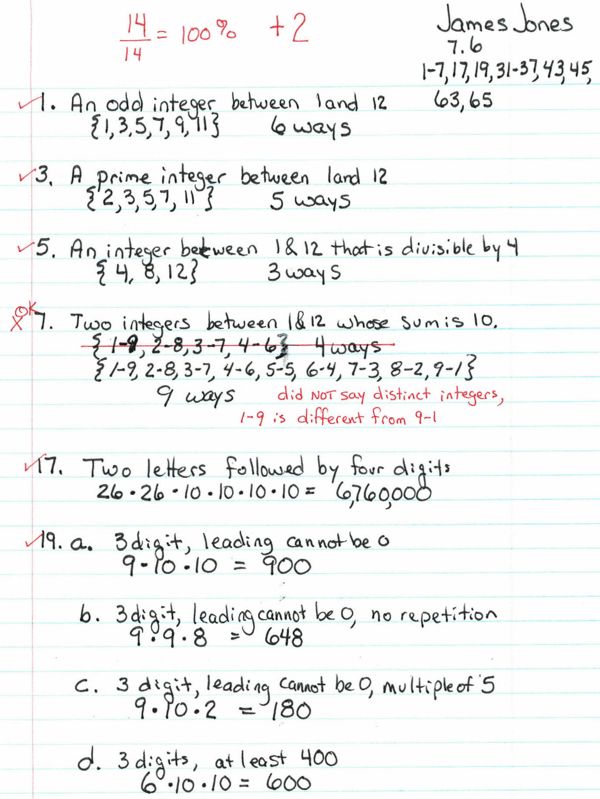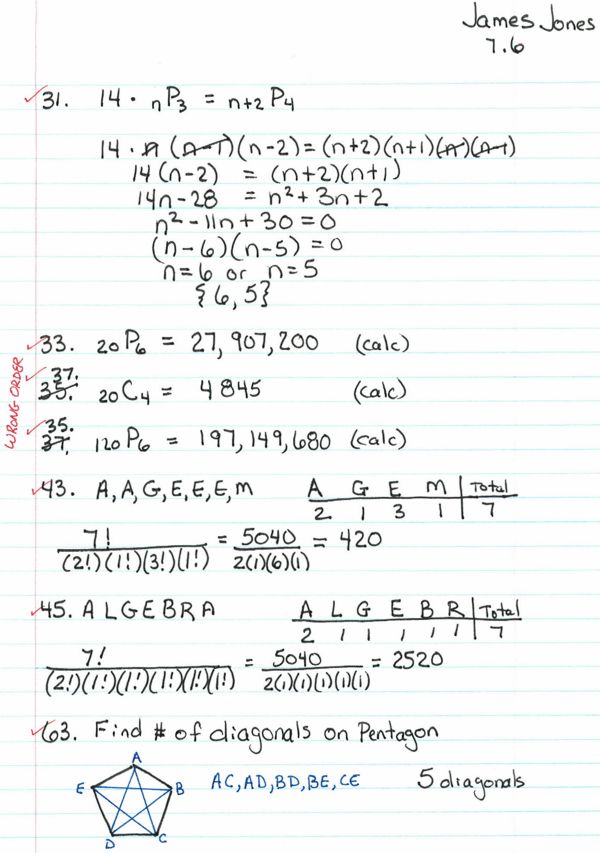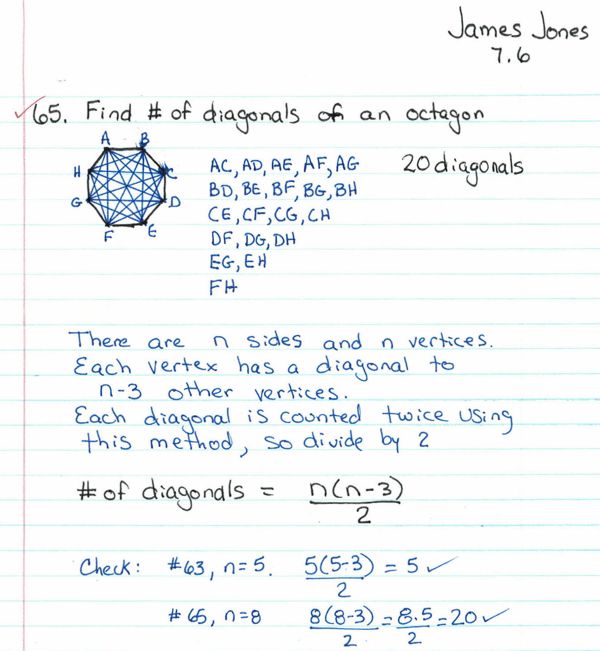Detailed Homework Instructions
An example section follows the guidelines.
Instructions
- Place your name in the upper right hand corner of the page.
- Place the homework section number in the upper right hand corner of the
page under your name.
- You may optionally write the homework assignment. It helps when you're doing the
homework so you don't have to keep on looking back to the homework sheet each time.
- Check each correct odd problem with a red pen. There are times you will not be able to
verify whether an even problem is correct, so the only requirement is to check the odds.
- If the problem is not correct, please go back and correct it before turning it in. You are
not grading what you had correct the first time around, but what you had correct by the
time of the exam.
- Score the section at the top of the page as a fraction (number of odds correct over the total
number of odds).
- Convert that fraction into a percent (round to the nearest whole number).
- Use the chart to award points. In this case, 100% falls in the 80-100% range, and would
be awarded 2 points.
- Record only the points on the homework sheet.
- Make sure your homework is legible.
- Show work where necessary. (The instructions for 33-37 were to use the calculator, so
there is no work). Problem 31, however is something that can not be done in your head,
so show the work.
- Be sure to allow plenty of room between problems. Don't crowd your homework.
- You will be able to use your homework on the final exam. Make sure all problems are
legible and clearly identified. There could be problems directly from the homework on
the final exam.
- If you're not going to get 100% on each section, make sure you at least get 80% so you
can get the 2 points.
- Please make an effort to do the difficult problems, rather than just doing enough of the
easy ones to get the 80%. The more difficult ones help you to make sure that you really
understand the material, rather than just being able to punch something into the
calculator.
Sample Section (section 7.6 of 3rd edition)
These papers were worked in pen so that they would show up well when I scanned
them. You should really do your homework in pencil. Also notice that I've either
copied the problem down or made a note of what they were looking for. That
way, I'll be able to go back later and make sense
out of it. If I just put down the answer, then it doesn't help me understand
it. Remember that the final exam is open notebook and you may use your homework
on it.
Page 1 of 3
Notice the mistake on #7. I figured out why the problem was wrong and then
got the right answer and wrote myself a note to remind myself of why I got
the wrong answer. When you grade, it is what you have right when you turn
it in on the day of the test, not how many you had right the first time.
I normally would finish the homework and then check it so there wouldn't be
room right after the problem to fix it. In that case, I would just fix the
problem at the end of the homework section. For #7, I had some doubts when
I worked the problem, so I checked it right away rather than waiting until
the end of the homework.

Page 2 of 3
Notice I did problems 35 and 37 backwards because my eyes jumped. Just fix
it, you don't need to rework the problems.
Also, some problems were supposed to be done with the calculator, so I just
made a note that I used the calculator.

Page 3 of 3
Although this section is about counting techniques, it worked better for me
to actually draw the octagon and put in the diagonals. By labeling the vertices,
I was able to list out the diagonals and then count them up.
Finally, since this is a section about counting techniques, I tried to develop
a formula that could be used so that I didn't have to draw all the diagonals
on the picture. I then checked my formula to make sure that it was working
correctly.




